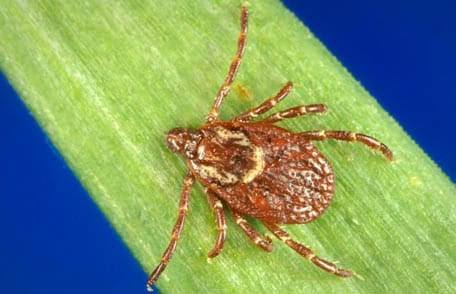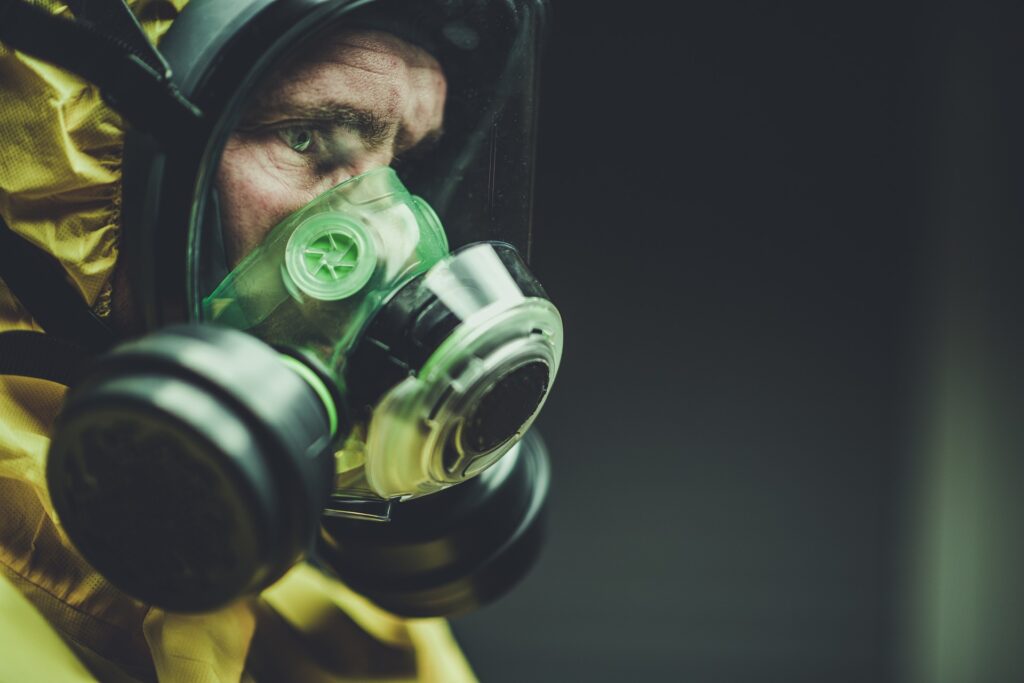Rocky mountain spotted fever (RMSF);
Case Presentation of RMSF
A young hiker returns from a weekend adventure in the Rockies with fever, headache, and a peculiar spotted rash. Concerned, they seek medical attention, only to be diagnosed with Rocky Mountain Spotted Fever (RMSF), a potentially deadly tick-borne illness. So let’s know what’s this RMSF:

Overview
RMSF is a bacterial infection caused by the bacterium Rickettsia rickettsii, primarily transmitted through the bite of infected ticks; Ixodid species, notably the American dog tick and the Rocky Mountain wood tick. These arachnids are commonly found in wooded areas, grasslands, and even urban parks, posing a significant risk to outdoor enthusiasts.
What is Rocky Mountain Spotted Fever (RMSF)?
RMSF is a rickettsial disease caused by Ixodid ticks bite, characterized by fever, headache, and a distinctive rash. Named after the Rocky Mountains where it was first identified, RMSF cases have been reported throughout the Americas, from Canada to Argentina.
Causes of Rocky Mountain Spotted Fever (RMSF):
Rickettsial Bacterium:
- Rickettsia rickettsii: RMSF is caused by the bacterium Rickettsia rickettsii, a gram-negative intracellular bacterium belonging to the genus Rickettsia.
Vector-Borne Transmission:
- Ixodid Ticks: The primary mode of transmission for RMSF is through the bite of infected ixodid ticks, also known as hard ticks.
- Tick Species: RMSF is primarily transmitted by ixodid ticks such as the American dog tick (Dermacentor variabilis), the Rocky Mountain wood tick (Dermacentor andersoni), and occasionally the brown dog tick (Rhipicephalus sanguineus).
- Infected Tick Hosts: Ticks become infected with Rickettsia rickettsii after feeding on infected animal hosts, such as rodents, deer, or domestic animals.
Bite Transmission:
- Saliva Contamination: When an infected ixodid tick attaches to a human host and begins to feed, it regurgitates the bacterium-laden saliva into the host’s bloodstream, thereby transmitting the infection.
- Skin Penetration: Rickettsia rickettsii can penetrate the skin through the tick’s feeding apparatus, facilitating the transfer of the bacterium into the host’s bloodstream.

Pathogenesis of RMSF:
Rocky Mountain Spotted Fever (RMSF) is a potentially life-threatening disease caused by the bacterium Rickettsia rickettsii. The pathogenesis of RMSF involves a complex interplay between the bacterium, the host’s immune response, and the endothelial cells lining the blood vessels. Here’s a closer look at how RMSF progresses within the human body:
1. Transmission and Initial Infection:
- RMSF is primarily transmitted to humans through the bite of infected ixodid ticks, such as the American dog tick and the Rocky Mountain wood tick.
- Upon entering the bloodstream, Rickettsia rickettsii quickly infects endothelial cells lining the blood vessels.
2. Systemic Dissemination:
- Rickettsia rickettsii rapidly disseminates throughout the body via the bloodstream.
- The bacterium can infect various organs and tissues, including the skin, brain, lungs, kidneys, and heart.
3. Endothelial Cell Injury:
- Rickettsia rickettsii targets endothelial cells, leading to direct injury and dysfunction.
- Endothelial cells play a crucial role in regulating vascular function and inflammation. Damage to these cells disrupts normal vascular homeostasis.
4. Vascular Permeability Changes:
- Infection with Rickettsia rickettsii induces vascular permeability changes, leading to leakage of fluid and proteins from blood vessels into surrounding tissues.
- Increased vascular permeability contributes to the development of edema and may lead to hypovolemia and shock.
5. Inflammatory Response:
- The presence of Rickettsia rickettsii triggers an inflammatory response, characterized by the release of pro-inflammatory cytokines and chemokines.
- Inflammation contributes to tissue damage and systemic manifestations of RMSF, such as fever, headache, and muscle pain.
6. Vasculitis and Microvascular Thrombosis:
- Endothelial cell injury and inflammation lead to the development of vasculitis, inflammation of blood vessels.
- Microvascular thrombosis, the formation of small blood clots within the vessels, further compromises blood flow and tissue perfusion.
7. Clinical Manifestations:
- The pathogenic processes described above contribute to the characteristic clinical manifestations of RMSF, including fever, headache, rash, and multi-organ dysfunction.
- Without prompt treatment, RMSF can progress to severe complications, including organ failure and death.
Signs and Symptoms:
The hallmark symptoms of RMSF typically appear within 2 weeks of a tick bite. These include:
- Fever: Often sudden and high, exceeding 102°F (39°C).
- Headache: Intense and persistent, often accompanied by photophobia.
- Rash: Characterized by small, pinkish spots that first appear on the wrists, ankles, and forearms, then spread to the trunk and extremities.
- Muscle Aches: Especially in the back and calves.
- Nausea and Vomiting: Common gastrointestinal symptoms.
Risk Factors
Several factors increase the risk of contracting RMSF:
- Outdoor Activities: Hiking, camping, and gardening in tick-infested areas.
- Tick Exposure: Contact with ticks, especially during warm months.
- Geographic Location: Regions with high tick populations, including the southeastern and south-central United States.
- Delayed Treatment: Failure to seek prompt medical care increases the risk of severe complications.
Diagnosis
Diagnosing RMSF can be challenging due to its nonspecific symptoms and the need for timely intervention. Physicians often rely on a combination of clinical presentation, medical history, and laboratory tests, including:
- History and physical examination
- Acute and convalescent serologic testing (serologic testing not useful acutely)
- Polymerase chain reaction (PCR)
- Biopsy of rash with fluorescent antibody staining to detect organisms
Medical History:
- Tick Exposure: Inquiring about recent outdoor activities and potential tick bites is essential, as RMSF is transmitted through the bite of infected ticks.
- Geographic Location: RMSF is more common in certain regions, such as the southeastern and south-central United States, where ixodid ticks are prevalent.
Laboratory Tests:
- Serologic Testing: Serologic assays, such as indirect immunofluorescence assay (IFA) or enzyme-linked immunosorbent assay (ELISA), can detect antibodies against Rickettsia rickettsii in the patient’s blood. A significant increase in antibody titers between acute and convalescent serum samples supports the diagnosis of RMSF.
- Polymerase Chain Reaction (PCR): Molecular testing using PCR can detect the presence of Rickettsia rickettsii DNA in blood samples. PCR is particularly useful for early diagnosis, as it can detect the bacterium’s genetic material during the acute phase of illness.
- Complete Blood Count (CBC): Blood tests may reveal leukopenia (low white blood cell count) and thrombocytopenia (low platelet count), which are common findings in RMSF.
- Liver Function Tests: Elevated liver enzymes, such as alanine aminotransferase (ALT) and aspartate aminotransferase (AST), may indicate hepatic involvement in severe cases of RMSF.
Imaging Studies:
- Chest X-ray: Chest X-ray may be performed to assess for pulmonary complications, such as interstitial infiltrates or pleural effusions, which can occur in severe cases of RMSF.
- Computed Tomography (CT) Scan: CT scan of the brain may be indicated in patients with neurological symptoms to evaluate for encephalitis or intracranial hemorrhage.
Differential Diagnosis:
- Other tick-borne illnesses, such as Lyme disease, ehrlichiosis, and anaplasmosis, should be considered in the differential diagnosis.
- Other infectious diseases presenting with fever, headache, and rash, such as meningitis or viral exanthems, should also be ruled out.
Treatment of Rocky Mountain Spotted Fever (RMSF)
Effective treatment of Rocky Mountain Spotted Fever (RMSF) involves prompt initiation of antibiotics and supportive care to alleviate symptoms and prevent complications. Here’s an overview of the treatment approach:
Antibiotic Therapy:
- Doxycycline: The antibiotic of choice for treating RMSF is doxycycline, a tetracycline derivative. It is highly effective against Rickettsia rickettsii and should be initiated promptly upon clinical suspicion of RMSF, even before confirmatory laboratory results.
- Dosage: The recommended dose of doxycycline for adults and children over 8 years old is 100 mg orally twice daily for 7-14 days.
- Duration: Treatment duration may vary based on the severity of illness and clinical response. Most patients require antibiotic therapy for at least 7 days, but severe cases may necessitate a longer duration of treatment.
Supportive Care:
- Fever Management: Antipyretic medications such as acetaminophen or ibuprofen can be used to reduce fever and alleviate discomfort.
- Fluid Replacement: Intravenous fluids may be administered to maintain hydration and correct electrolyte imbalances, especially in patients with severe dehydration or shock.
- Pain Management: Analgesics such as acetaminophen or nonsteroidal anti-inflammatory drugs (NSAIDs) can help alleviate headache, muscle pain, and other symptoms.
- Close Monitoring: Patients with severe RMSF or complications may require close monitoring in an intensive care setting to assess vital signs, fluid status, and organ function.
Complications Management:
- Organ Support: Patients with severe RMSF and complications such as respiratory failure, renal failure, or neurological deficits may require supportive care tailored to their specific needs.
- Anticoagulation: In cases of disseminated intravascular coagulation (DIC) or thrombotic complications, anticoagulant therapy may be indicated to prevent further clot formation and mitigate the risk of thromboembolic events.
Follow-Up and Monitoring:
- Clinical Response: Patients should be monitored closely for clinical improvement, including resolution of fever, rash, and other symptoms.
- Laboratory Monitoring: Serial laboratory tests, including complete blood count (CBC), liver function tests, and coagulation studies, may be performed to assess for improvement and detect any complications.
- Long-Term Follow-Up: Even after completing antibiotic therapy, patients should undergo regular follow-up evaluations to ensure resolution of symptoms and monitor for potential relapse or late complications.
Preventive Measures:
- Tick Avoidance: Educating patients about the importance of tick avoidance measures, such as wearing protective clothing, using insect repellents, and performing thorough tick checks after outdoor activities, is essential to prevent future tick bites and RMSF recurrence.
- Community Education: Public health initiatives aimed at raising awareness about RMSF, tick-borne illnesses, and preventive measures can help reduce the incidence of RMSF and promote early recognition and treatment.
Complications:
Without timely intervention, RMSF can lead to severe complications, including:
- Organ Failure: Such as renal failure or respiratory distress syndrome.
- Neurological Complications: Such as meningitis or encephalitis.
- Vascular Damage: Resulting in disseminated intravascular coagulation (DIC) or vasculitis.
- Death: In severe cases, RMSF can be fatal, especially if left untreated.
In conclusion, RMSF is a potentially life-threatening illness transmitted by infected ticks, with symptoms ranging from fever and headache to a distinctive spotted rash. Prompt recognition, early treatment with antibiotics, and preventive measures such as tick avoidance are crucial in mitigating the impact of this stealthy disease. Stay vigilant, especially during outdoor activities, and seek medical attention promptly if symptoms arise.
Read more :

